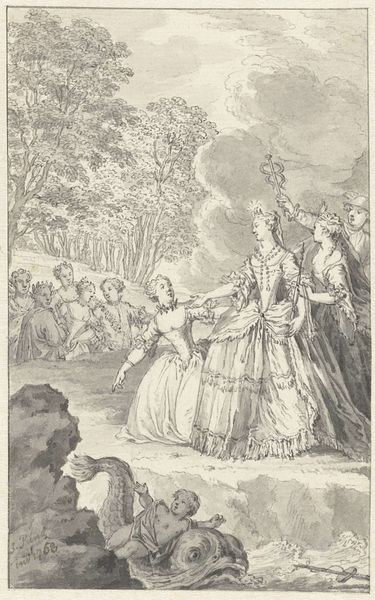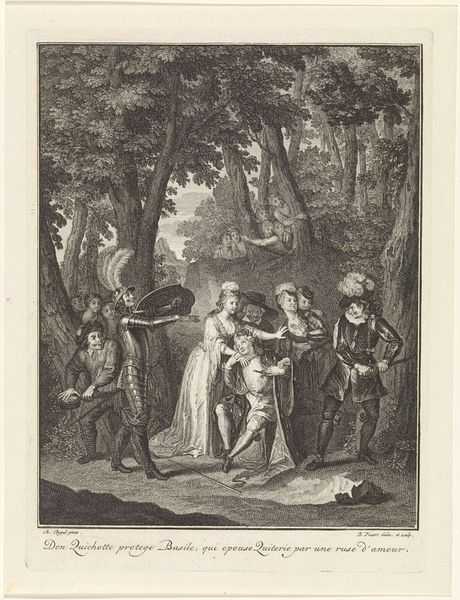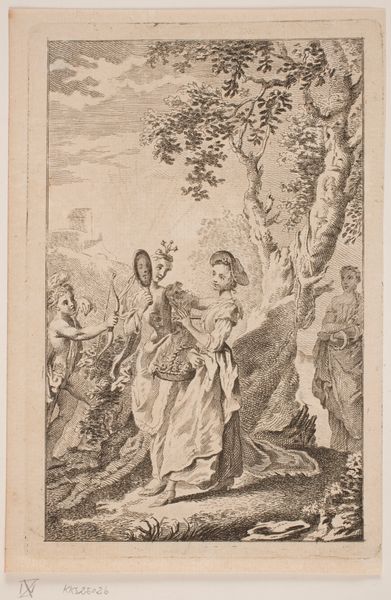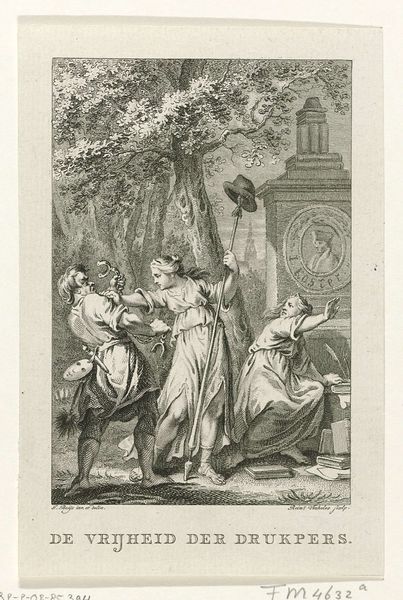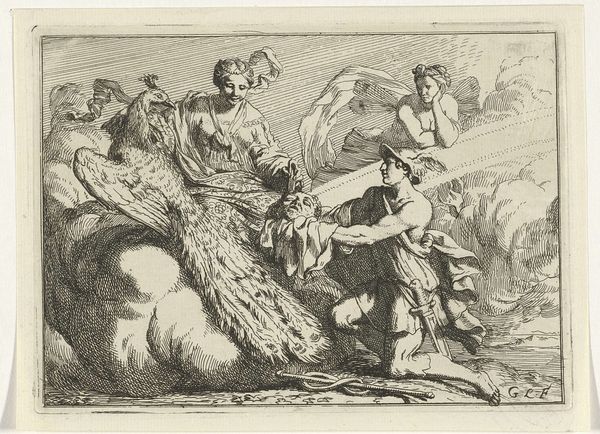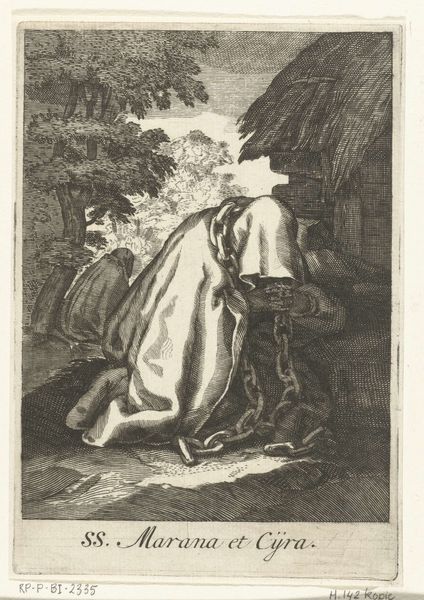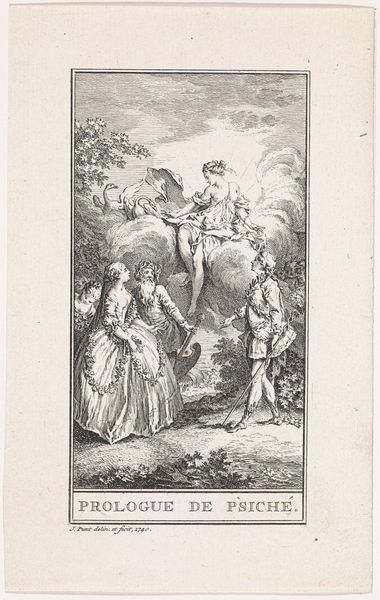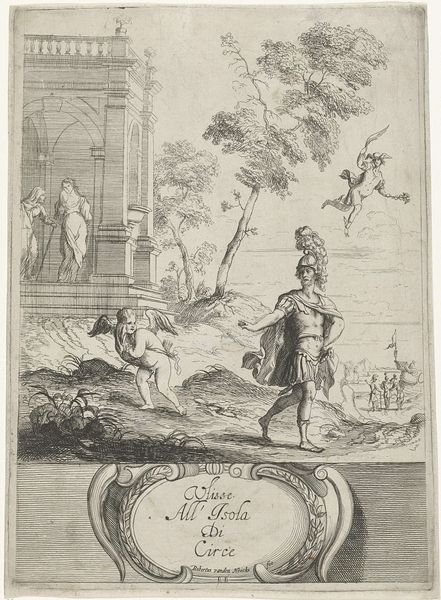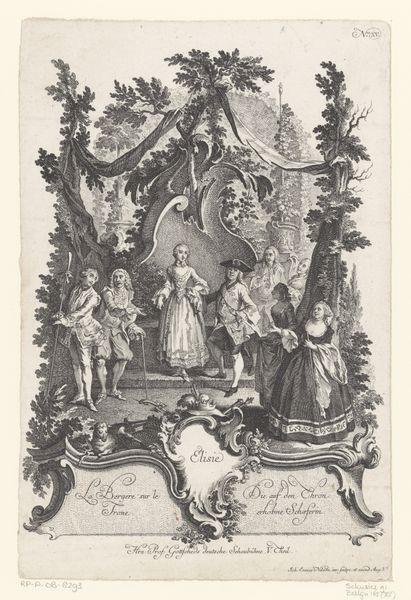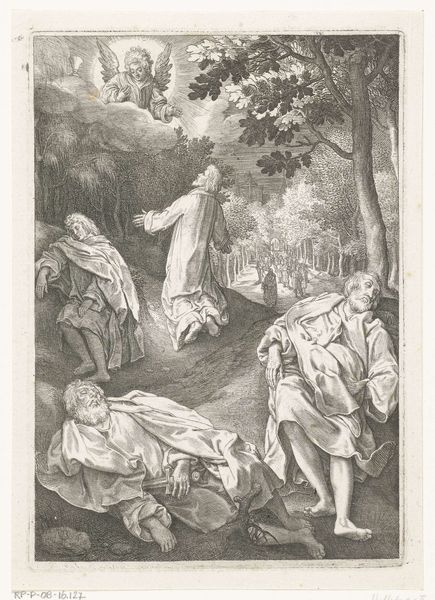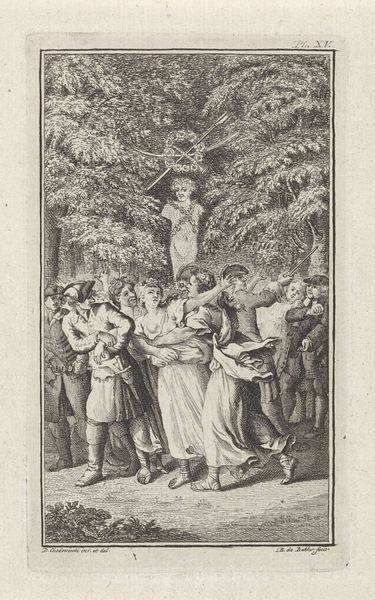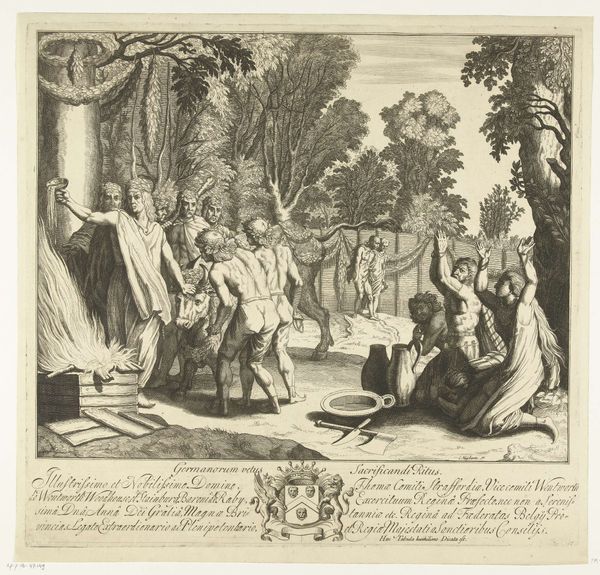
etching, engraving
#
baroque
#
etching
#
old engraving style
#
landscape
#
figuration
#
history-painting
#
engraving
Dimensions: height 142 mm, width 89 mm
Copyright: Rijks Museum: Open Domain
Curator: Allow me to introduce Jan Punt's "Allegorische figuren in landschap," dating back to 1759, here at the Rijksmuseum. Editor: My immediate reaction is a kind of subdued drama. The contrast isn't stark, it's a world rendered in thoughtful lines, a little play almost. What medium are we seeing here? Curator: It's an etching and engraving, skillfully utilizing those linear qualities. The figures, frozen in what I interpret as an allegorical performance, seem almost theatrical. I notice in particular the detail given to their costumes. Editor: Yes, the costumes speak volumes, hinting at status and the labor involved in their creation. I also notice the varied expressions, the faces each catching the light differently, and think this piece is rooted in accessibility via reproductive engraving—likely meant to circulate ideas about the New World through a growing consumer market. It speaks volumes of the artist's access to artisanal techniques. Curator: The allegorical language being used in that context would speak to a certain class—and what about the composition itself? The groupings of figures, the landscape receding into the background, all framed with baroque sensibilities. The arrangement of light and shadow isn't random; it leads the eye deliberately through the narrative being presented. Editor: Agreed. I'm compelled by the presence of figures within a natural, though stylized, landscape. What statement do you suppose this creates for an audience accustomed to symbolic or mythic landscapes in artwork and, possibly, exotic resource extraction in reality? It seems to weave political commentary. Curator: Certainly a commentary worth deeper investigation, as the New World was approached at this period. Jan Punt is a master here of integrating layers of symbolic meaning, framed by the tangible world represented through the meticulous details of engraving. I leave now with an appreciation for the ways that it invites inquiry beyond a singular experience, beyond any one formal reading. Editor: Me too, and the material print traditions employed show us both the skilled labor and a will to circulate new ideas around identity.
Comments
No comments
Be the first to comment and join the conversation on the ultimate creative platform.
